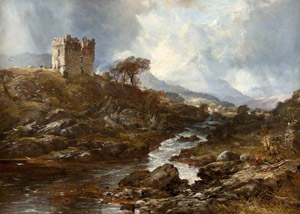WordPress database error: [Got error 28 from storage engine]
SELECT t.*, tt.*, tr.object_id FROM wp_terms AS t INNER JOIN wp_term_taxonomy AS tt ON tt.term_id = t.term_id INNER JOIN wp_term_relationships AS tr ON tr.term_taxonomy_id = tt.term_taxonomy_id WHERE tt.taxonomy IN ('category', 'post_tag', 'post_format') AND tr.object_id IN (19718) ORDER BY t.name ASC
Clan MacInnes History
MacInnes is a Celtic name derived from Mac Aonghais – Gaelic for the son of Angus. The earliest reference to the sons of Angus is given in the 7th century ‘History of the men of Scotland’ Senchus fer n’Alban.
The Scots of Dalriada were divided into 3 kindreds, Gabran, Lornet and Angus that possessed the Isle of Islay.
The next time their name appears is on the mainland in Morvern, a peninsula on the west coast. The clan held Kinlochaline Castle, a 12th century fortress, which served as the seat for the Chief of Clan MacInnes . It was attacked and burnt in 1644 by the MacDonalds under the control of James Graham, 1st Marquess of Montrose. The castle was attacked again in 1679, this time by the Campbells of Argyll, and it was eventually abandoned around ten years later. The clan became dependants of Campbell of Argyll, and supported the Hanovarians against the Jacobites in the uprisings, although one branch did fight for the Jacobite cause.
Kinlochaline Castle lay ruinous for centuries, and it was not until the late 1990s until their was a renovation, which was over seen by Historic Scotland, and the castle is now, once again, lived in.
In common with many fragmented families many emigrated to Canada, New Zealand and other English-speaking countries.
Clan MacInnes Posts







